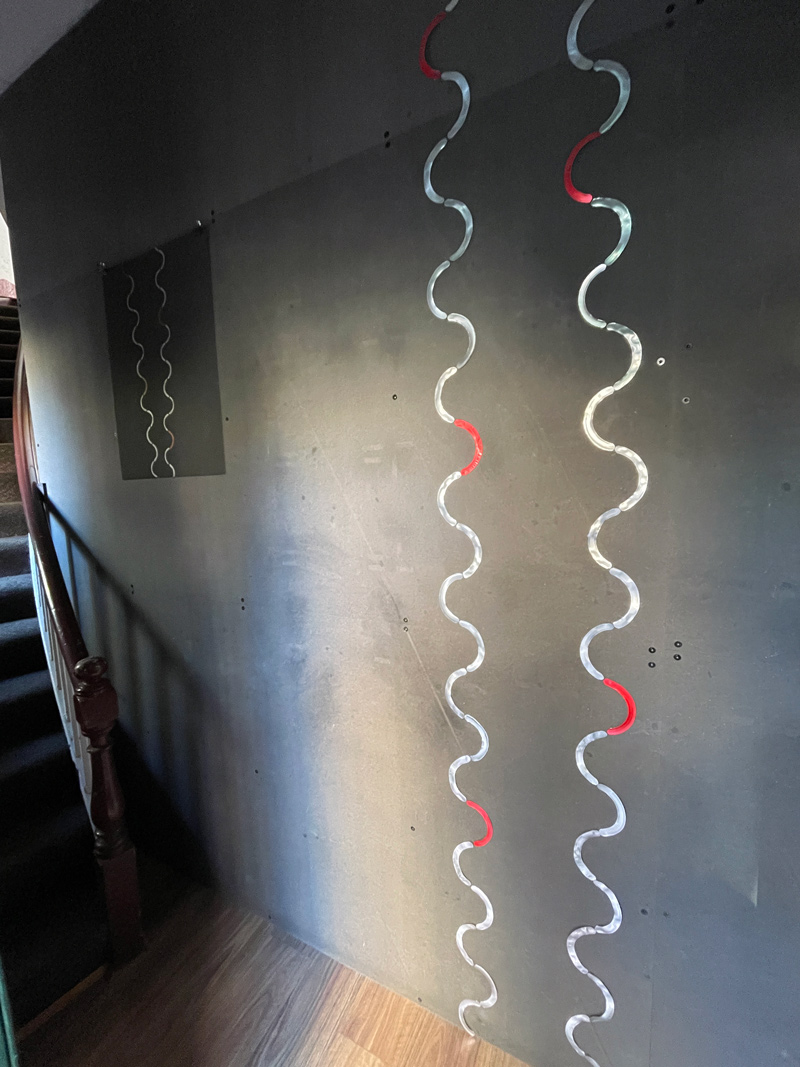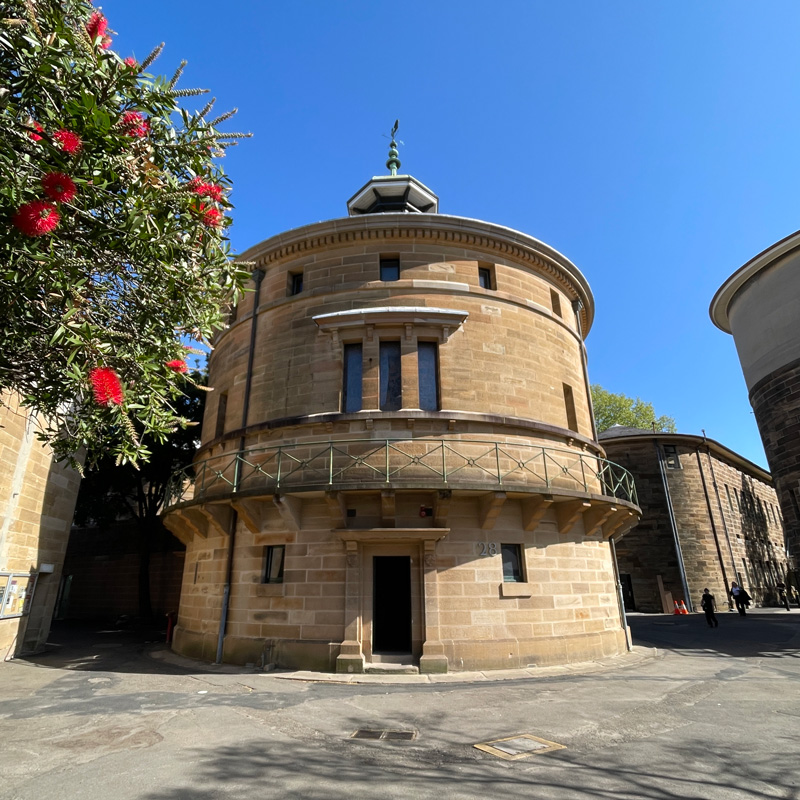
There are a few unusual exhibition spaces at the National Art School where students and staff can propose projects. Over six weeks in 2022, I gradually created a work in one called Backspace Projects, a black MDF wall connecting two staircases. 9 figures was made with linen yarn I rubbed with beeswax, steel tacks and colour dots of aluminium cut from drink cans.
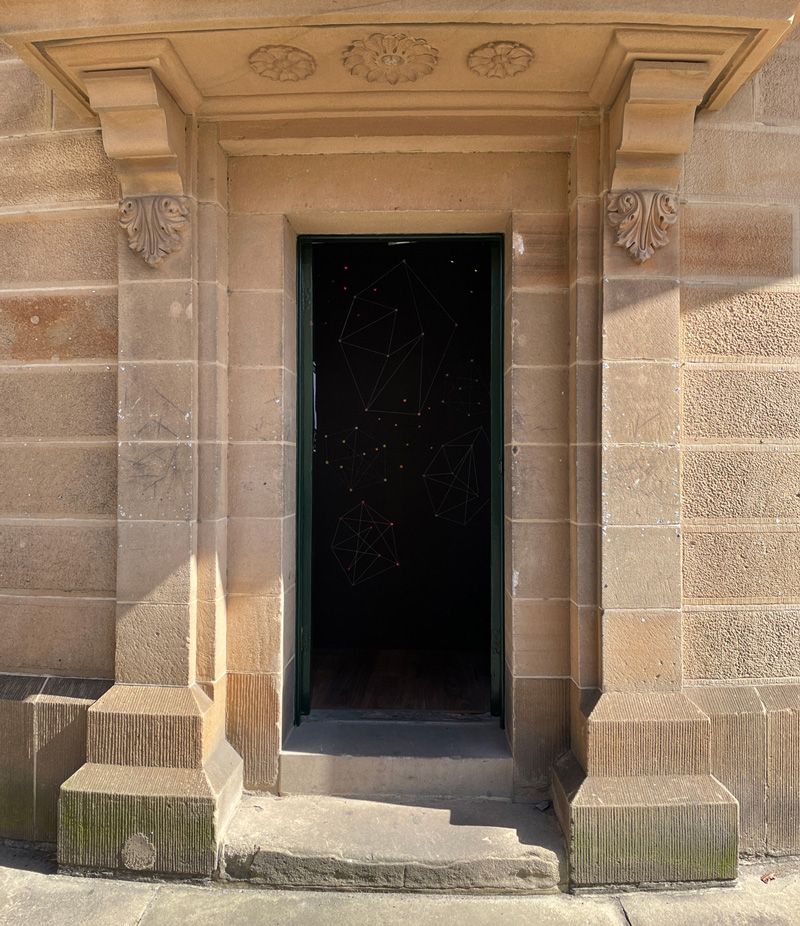
9 figures explores potentials of a material line and repurposed post-consumer waste to delineate serial non-objective forms that gradually develop into an ecology of geometric entities.
Each figure arises from the unremarkable placement of nine steel tacks distanced from each other without a predetermined form outcome.
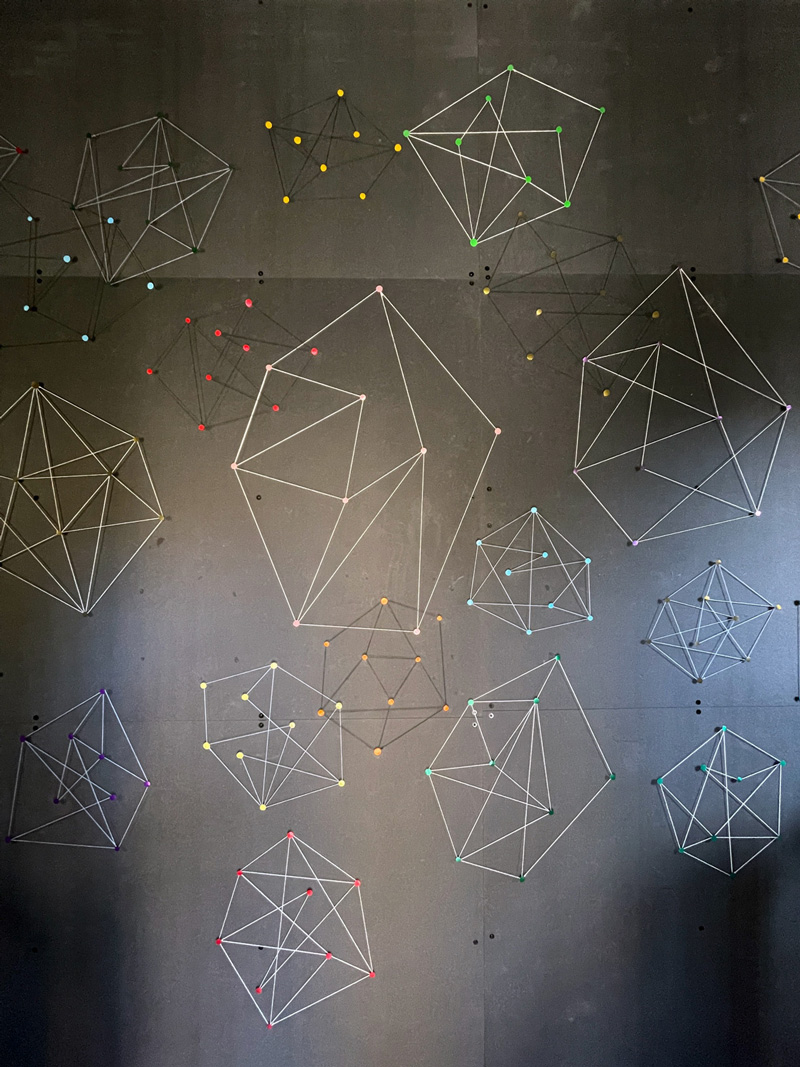
Linen yarn connects each set of nine points to reveal a unique assembly of irregular polygons.
Each locus is accentuated by a small disc of industrially painted aluminium, hand-cut from post-consumer drink cans.

9 figures was a temporary site-specific drawing of indeterminacy, seriality, cumulative production and non-objective minimal aesthetics.
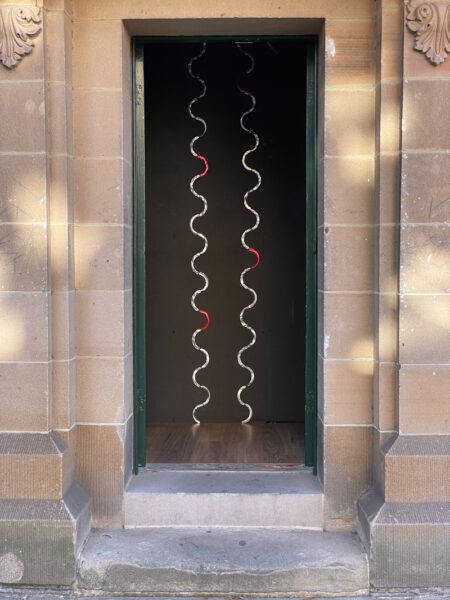
I realised another project titled taking space in Backspace in 2023. The materials were aluminium, and drawings using Prismacolor and Polychromos colour pencils on Stonehenge black 245gsm paper, 56 x 76cm
I’ve been disassembling aluminium drink cans for many years and repurposing them as working material for projects involving sound, drawing and small sculptures such as 9 figures described above.
Each tin breaks down into four parts – the top (removed with a can opener), the rectangle of the opened-out wall, the slightly heavier, thicker base and the shoulder that separates the rolled top seal from the cylinder’s vertical walls. This last part is an awkward shape, an arc about 15mm wide spanning about 130mm, not quite semi-circular. It doesn’t press flat because it was machine-pressed into a complex curve. So, flattened out, it’s always bumpy and irregular.
Having created and stored a few hundred of these shapes, I wondered how they might work as a material line and began arranging them in series. Connected end to end and alternating the direction of the arcs produced a reasonably compelling sinusoidal form with an interesting visual energy. Setting long lines parallel to each other enhanced the effect.
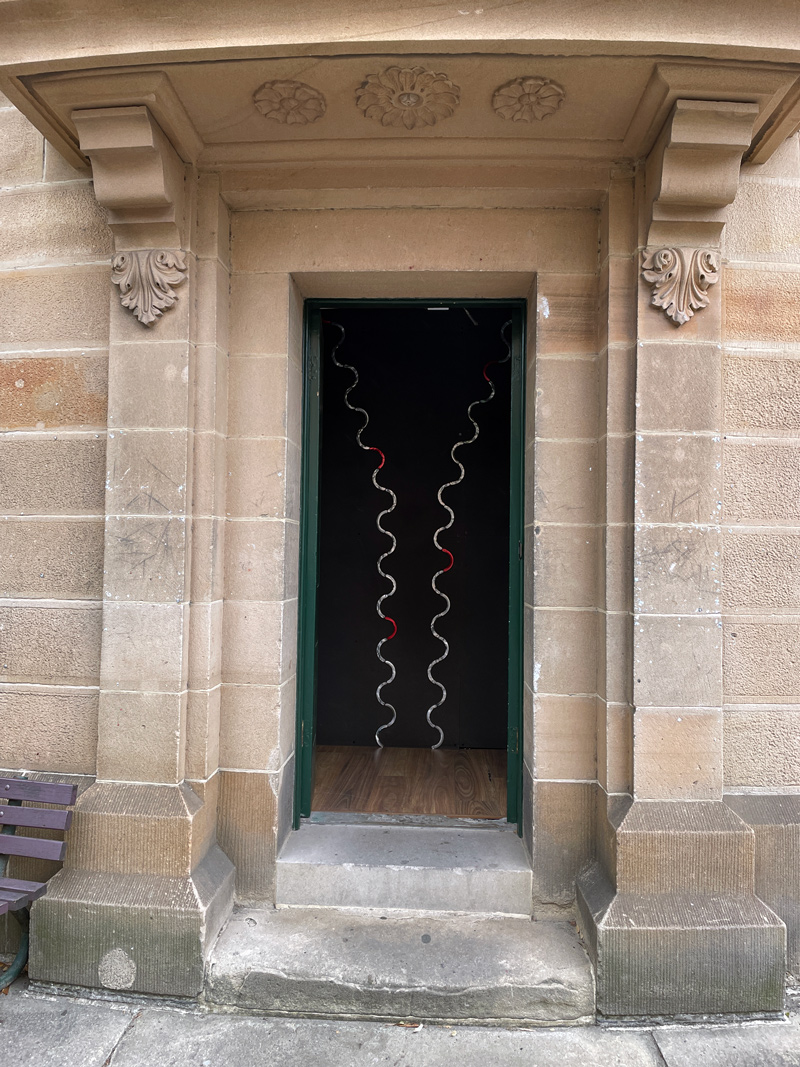
Installing a work in Backspace earlier in the year provided the opportunity to study the odd dynamics of this dark, narrow connecting space. When invited to develop another work for the space I wanted to ensure there was a visual attraction to capture the eye of pedestrian viewers, often moving quickly between buildings.
The reflective inner surface of the original container provides this vision trap. Even when overcast or at the end of the day, when daylight is almost extinguished, the aluminium surfaces fling an uncanny gleam and hopefully inspire curiosity.
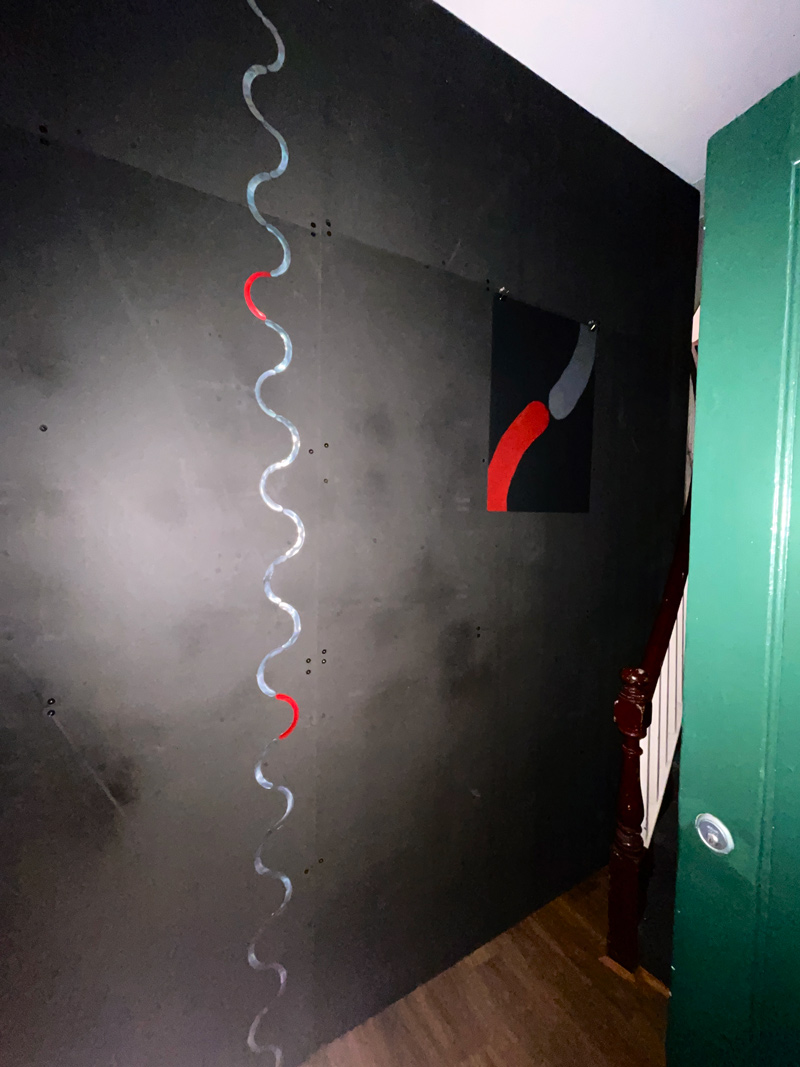
I wanted to develop drawings to accompany the wavy metal lines climbing the black wall. I first imagined a one-to-one replication using colour pencils, to create a small conceptual oscillation between object and representation. When I began to make this drawing, with only a couple of silver and red arcs half-drawn, the incomplete drawing revealed a better strategy – to work with scale, with much larger and much smaller versions of the line form.
